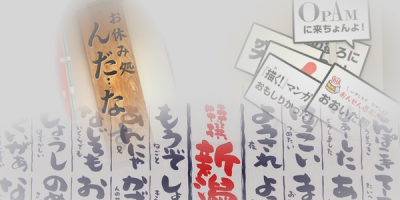
Mrs. Niu, who had always spoken in a graceful Osaka dialect, now talks a blue streak in the speedy Tokyo dialect. Seeing this, Sachiko feels that “her personality has suddenly worsened somehow.” Why does Mrs. Niu now speak in a Tokyo dialect and deploy a “Tokyo native” character, even though it makes a bad impression on others? This is the question I asked last time.
Part of the answer to this problem can be found in my previous entry.
The reason Mrs. Niu is good at using the Tokyo dialect is that she had a lot of Tokyo friends, and Mrs. Niu continues to use Tokyo dialect now because she has a conversation partner named Mrs. Sagara, who is “a consummate Tokyo lady.” Like Mrs. Niu, we are often attracted by our conversation partners’ ways of speaking, and carried away by it.
In fact, Sachiko, upon hearing Mrs. Niu blazing away in Tokyo dialect, later says that she was “somewhat pulled into speaking Tokyo dialect” herself (Sasameyuki Vol. 3, 1947–8). Sachiko is very easily induced to speak like others. After a flood, her German neighbor Mrs. Stolz says to her, “[I hear your daughter’s school is safe.] Anata anshin desu ne” (You must be relieved) and “[I heard your younger sister went missing.] Anata no shinpai, watashi wakarimasu. Watashi, anata ni doujou shimasu,” (I understand how worried you are. I sympathize.) in halting Japanese. Sachiko replies, also in halting Japanese, “Arigatogozaimasu” (Sasameyuki Vol. 2, 1947).
In the conversations exchanged with Mrs. Sagara, Sachiko is not induced to speak in Tokyo dialect. On the contrary, she found that Mrs. Sagara “made her feel self-conscious, or rather made her feel that the Tokyo dialect was itself somehow sordid, and she intentionally tried to moderate her use of it, and use her local dialect instead.”
We will call this behavior—doing the opposite of what the other person does, just as the North end of the compass always points away from the South end—“reaction.” If “reaction” denotes the act of pulling against one another, like the North and South ends of a compass, then “inducement” by contrast is the act of being led to act in the same way as the other person. We can observe examples of “inducement” in our everyday conversation. Suppose the other person comes at you with the anego character introduced in part 8. Well, ok. I’m usually an anego character too, but today I’ll take on the imouto character to avoid clashing with her character. This is a type of “reaction.”
Sachiko is prone to both inducement and reaction with regards to Tokyo dialect. But why doesn’t Mrs. Niu react (at least as far as she is portrayed in the novel) to it, allowing herself to be led along so easily? (Again, to be continued.)








